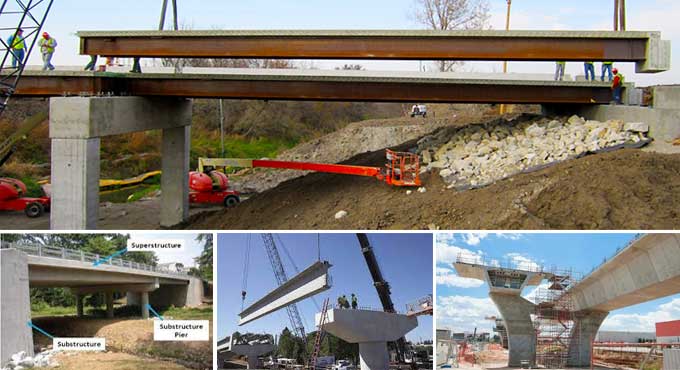
A Brief Guide to the Top 4 Key Bridge Materials

For bridge construction, traditional materials include stone, timber, concrete, and steel. Since timber and stones come directly from nature and are readily available, they were used in construction during the initial period.
Construction materials such as brick and stone were used as subgroups. The durability of stones makes them a very popular construction material. As a reminder of past architectural culture, many historic bridges are still made of stone.
Environmental conditions have caused some timber bridges to be washed away or degraded. As time passed, bridge construction materials underwent more development than bridge technology in construction methods.
Steel
As the strongest and most durable bridge material, steel is suitable for the longest span, most daring bridges. The compressive strength of normal building steel is ten times greater and the tensile strength is one hundred times greater than that of medium concrete.
A special feature of steel is its ductility, which allows it to deform considerably before it breaks, since it begins to yield when over stressed. In standard quality terms, yield strength is the first term.
Stone
Master builders built great bridges with stone masonry, such as those of the Etruscans and Romans. The arches and piers have lasted for thousands of years with hard stone and firm foundations. The durability, beauty, and large span of stone bridges make them ideal for construction.
The cost of stone bridges has increased dramatically over the past few decades. A well designed and well built stone bridge might, over time, end up being the least expensive, since they last for centuries and require virtually no maintenance, unless they are attacked by extreme air pollution.
Pre-stressed & Reinforcement Concrete
Steel bars are embedded into concrete for tensile reinforcement. If bars are designed and placed correctly, the cracks remain harmless and are called hair cracks.
Most construction projects use concrete as a construction material. Its dull gray color makes concrete unsuitable for construction like bridges, but some concrete bridges can be stunning if you know what you're doing.
In addition to its high compressive strength, good concrete is resistant to most natural attacks. As a result, it is not resistant to deicing saltwater or CO2 and SO2 in polluted air. It is not preferred because of its low tensile strength in areas of tensile stress.
The steel bars begin functioning when the concrete cracks, which is when the concrete is no longer able to withstand further tensile stresses. It is also possible to resist tensile forces in concrete structures by pre-stressing them.
Wood or Timber
In the past, wood was used extensively in the construction of bridges, unlike today, when it is used for building construction. Wood and timber are no longer used for mega projects because steel and concrete offer greater flexibility. Nonetheless, innovations related to wood preservation have resulted in an increase in wood demand for construction.
The main advantages of wood as an engineering material are its high toughness and sustainability. The raw materials are obtained directly from nature, which makes them eco-friendly. Because wood has a low density, it has a high specific strength. Due to their strength and lower density, they are easily transportable due to their strength.
Wrapping it Up
Modern bridges are made of concrete or steel or a combination of both, thus originating modern bridge engineering technology. Different other innovative materials are being developed so that they can be well suited to bridge terminologies. In addition to strengthening existing bridges with these materials, these materials can construct new ones.
To learn more, watch the following video tutorial.
Video Source: Timmons Group
Artificial materials such as concrete & steel are refined by man. This second period of bridge engineering is characterized by bridges constructed of artificial materials. The construction of bridges is now incorporating fibers that are high strength gaining materials.


